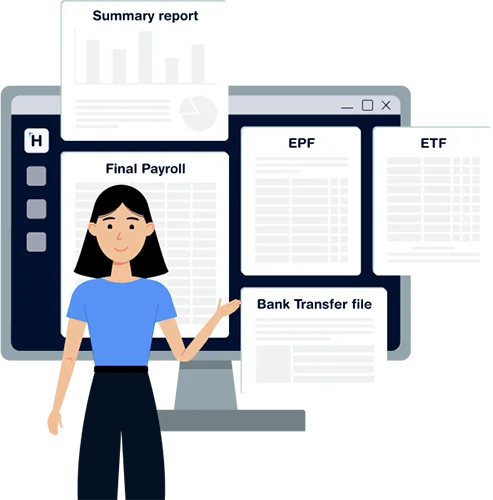Most small businesses in Sri Lanka don’t start with a full HR department. It’s usually the owner, a manager, or the finance lead juggling multiple responsibilities, including HR. But as teams grow, so do the problems, especially when it comes to managing people from the day they join to the day they leave.
That’s where a simple HR system can make a big difference. Not just to reduce paperwork, but to bring consistency and control to how your business handles its people.
The First Step: Onboarding Without the Paper Trail
When a new employee joins, there are forms to collect, bank details to record, EPF/ETF numbers to set up, and contract terms to track. For SMEs, this often means sending a few emails, using printed forms, or sharing Excel sheets.
Many Sri Lankan businesses now demand automated onboarding forms, a small feature, but one that saves hours. Instead of chasing signatures or manually typing in names and NICs, employees fill out their details once, and it syncs straight into the system.
For businesses with larger teams, bulk onboarding through CSV files is also becoming common. It’s especially useful for retail chains, logistics firms, construction companies and other businesses where you might onboard several people at once.
In the Middle: Managing the Day-to-Day Without the Mess
The middle of the employee lifecycle is where most of the mess happens. Someone takes leave but forgets to log it. Another employee’s salary is updated but not reflected in the final payroll. Contracts sit in someone’s inbox with no backup.
With an HR system in place, you can avoid these issues:
- Leave and attendance are connected to payroll
- Salary updates are logged with time stamps
- Employee records (NICs, contracts, bank info) are stored securely
- You can track who made changes and when
This isn’t about fancy features. It’s about avoiding confusion, miscommunication, and extra work.
The Final Step: A Smooth Exit Process
When someone resigns, it often leads to a scramble, calculating final dues, adjusting leave, generating final payslips, and updating EPF details. Most SMEs do this manually, which increases the chance of mistakes or delays.
Even if your HR system doesn’t automate every step, it can support proration of salaries, stop payroll runs for the resigned employee, and generate compliance-ready reports. It’s smoother, faster, and makes life easier for both company and exiting employee.
And just as importantly, it leaves a good final impression, something that matters when you’re building a business brand.
So Why Does This Matter for SMEs?
Because employee issues aren’t just ‘big company problems’. They happen in 10-person teams just as much as in 100-person teams. But when you’re smaller, every mistake hits harder. A missed EPF payment or a salary error isn’t just inconvenient, it can lead to real problems with trust or even penalties.
An HR system helps reduce those risks. It gives you structure, accuracy, and a clear trail of what’s been done. That means fewer mistakes, less confusion, and more time to focus on what matters: running your business.
Seamless Employee Lifecycle Management Can Transform Your Business
You don’t need a massive HR platform to manage the employee journey. Start simple. Even adding onboarding forms and payroll proration can help you build smoother systems and a more professional work environment.
From first day to final salary, a clear, consistent HR process shows your employees that your business is serious about people, and that’s something they’ll remember.



